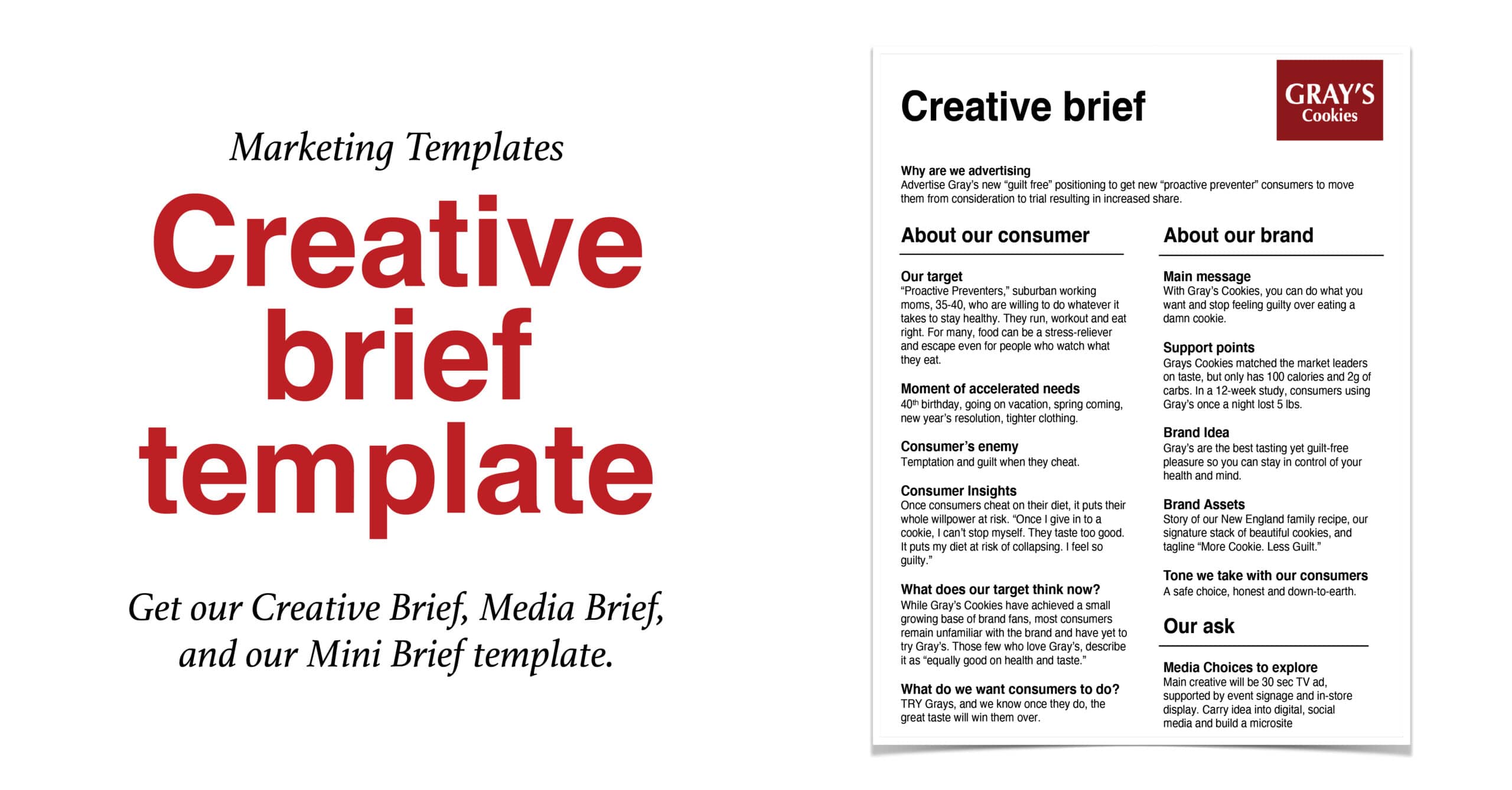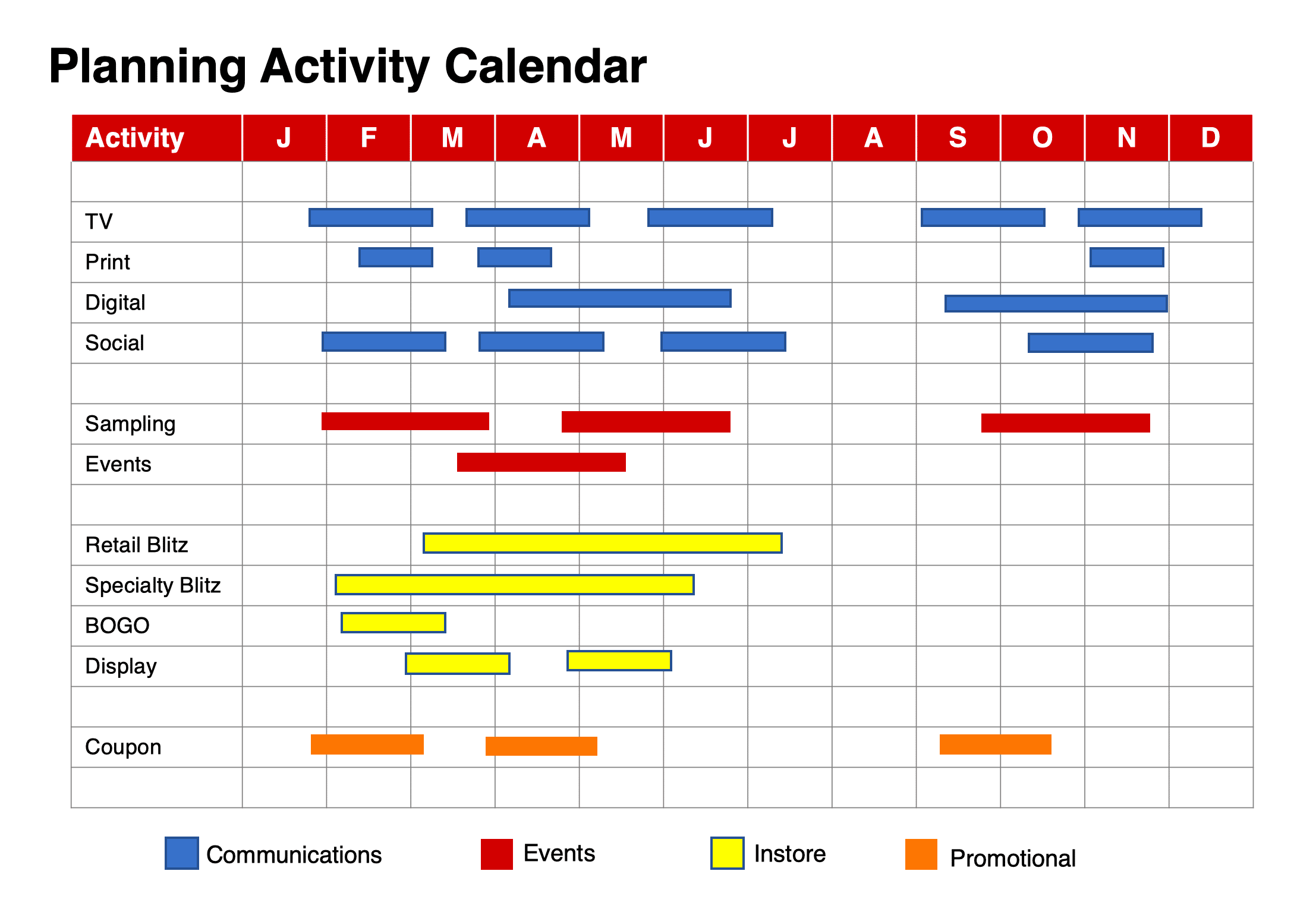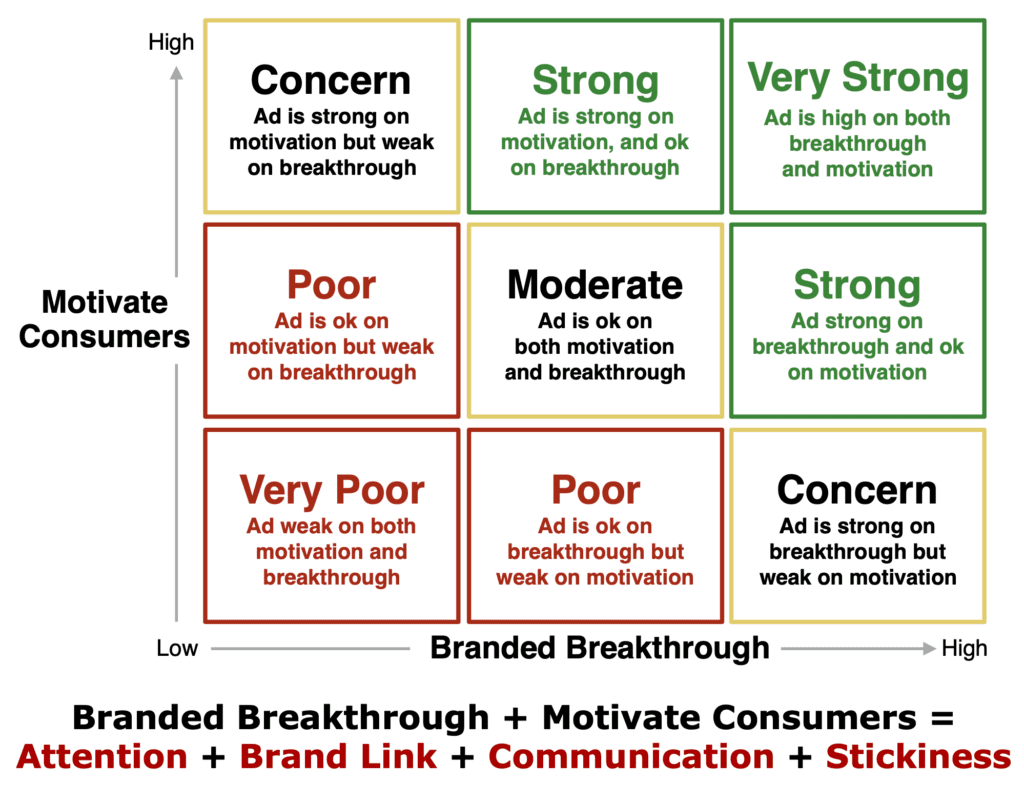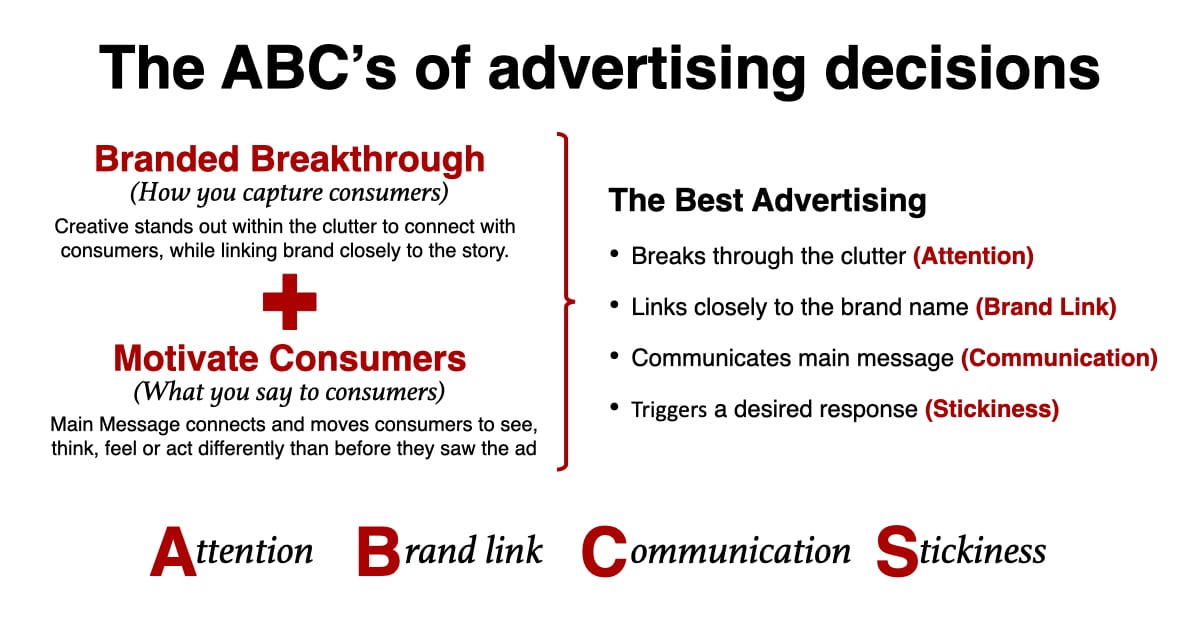First and foremost, your media planning journey will make it a good idea for your brand’s media budget. Without knowing your financial boundaries, you are essentially navigating without a compass. As your initial step, carefully examine your brand’s core strengths and its bond with consumers. This is a crucial part of the puzzle.
Afterward, you can point out the stage of the consumer journey you aim to influence and the touchpoints where consumers will most likely engage with your brand’s message. At this juncture, you make an informed decision. Finally, align your media choices to optimize your creative execution. This synchronization can be a game-changer.
Transitioning to the next important concept, striking a balance among your media options is a delicate art. It’s a matter of considering media efficiency, quality, impact, and the brand’s fit in the picture. This balance is not just a concept, it’s a crucial decision that can shape your marketing success. Never underestimate these factors. Regarding media efficiency, we’re talking about the concepts of reach and frequency.
Understanding the media math.
In essence, reach is the total number or proportion of different households or individuals who have been exposed to your ad at least once within a specified timeframe. It’s the first ingredient of your media recipe. Meanwhile, frequency translates to the number of instances those households or individuals are exposed to your ad within a specific period. This component determines the lingering taste of your brand’s presence.
Remember, the magic lies in the blend of these factors, and your media strategy’s success hinges on it. In conclusion, when you master the balance, your brand’s message not only reaches your target audience but also resonates with them. It’s all part of the great marketing dance.
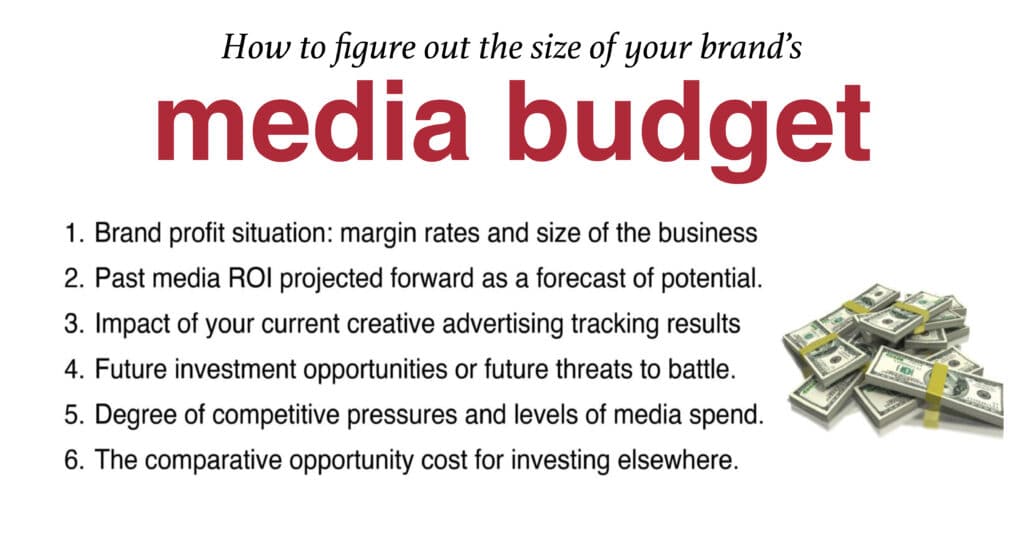
Be careful to avoid relying on efficiency alone. You need to balance it with the quality of the media choices. Moreover, I always set aside about 10 percent of my media budget to create a high impact to generate early attention to a new campaign or product innovation.
Media strategy
How strategy drives media choices
Use your strategic thinking to understand how much you can invest. Focus your limited resources on a distinct opportunity point. The reasons you would strategically invest in the media include:
- First, the discovery of a new brand message you know will motivate consumers to buy your brand.
- Next, identify change in consumer needs, motivations, or behaviors, which will benefit your brand.
- Then, shift the competitive dynamic, with an opportunity to make gains or a necessity to defend.
- Continue to fuel brand growth with a window to drive brand profits.
- New distribution channel you can use to move consumers through before competitors do.
- Finally, the launch of a breakthrough product innovation offering a competitive advantage to your brand.
To make the media investment pay off, you need to be able to drive a performance result that pays back with an increase in brand power you can use in the future or an immediate increase in brand profit.
Media Budget
The six factors to help guide you on the size of your media budget:
- First, the brand profit situation looks at margin rates and size of the business.
- Past media ROI projected forward as a forecast of the potential.
- Impact of your current creative advertising tracking results
- Future investment opportunities or future threats to battle.
- Degree of competitive pressures in the marketplace and their levels of media spend.
- Finally, the comparative opportunity cost for investing elsewhere.
Take your brand knowledge to new heights with our Beloved Brands playbook
Beloved Brands is a comprehensive guide that covers the fundamentals of brand management. It goes deep on strategic thinking, brand positioning, brand plan development, advertising decisions, media planning, marketing analytics, and the brand financials. This is an opportunity to build your marketing skills to help your career. And, it will provide you with the roadmap for driving growth on your brand.

Marketers see Beloved Brands playbook as a go-to resource, as they keep it within arm’s reach for any new project. We are thrilled to see that it has received a 5-star rating from nearly 90% of Amazon reviewers. Additionally, we have also created playbooks for B2B Brands and Healthcare Brands, catering to specific industries.
Media budget levels
Initiating the conversation, zero-based marketing budgeting operates on a compelling premise. Every new year is a blank slate where all brand budgets start from scratch – a zero – and each brand must justify its budget requirements anew. It’s a tough but potentially rewarding reset button.
Theoretically, this concept seems perfectly rational, however, the implementation isn’t a walk in the park. There’s a palpable risk I’ve observed. Specifically, a zero-based budget could veer towards short-term, transaction-oriented advertising, which might lose sight of long-term brand goals.
Pivoting to another crucial aspect, a brand needs to maintain a delicate equilibrium.
This balancing act involves brand-building activities that strengthen the long-term relationship with consumers and transactional, call-to-action messaging designed to trigger immediate purchases. It’s a tightrope walk.
To illustrate, if your strategy keeps repeating “Buy two, get one free” year after year, your consumers might ultimately lose sight of the reasons to buy your product in the first place. They might forget why they should invest in even a single item, let alone two.
Unquestionably, there is a degree of ambiguity when making investment decisions. Trust your instincts. You’ll need to grow comfortable with this inherent uncertainty to strike the right balance and make informed choices. Remember, the strength of your brand doesn’t just lie in numbers, but also in the depth of the relationship with your consumers. It’s not just business; it’s a relationship.
Low media budget focuses on blowfish type marketing
Kicking off, when the risk-reward ratio of your media investment wanders into uncharted territory, a cautious first step could be prudent. It might be wise to start with what I like to call a “blowfish” media plan. It’s a bit like the creature puffing itself up to appear larger than it is.
Essentially, you select a tight target market coupled with a limited media choice or geographic focus. You’re crafting an illusion. To those you’re aiming for, your brand seems larger than life, mimicking the presence of a brand with a much heftier media investment. It’s a clever game of perception.
Entering the realm of the unknown, when uncertainty looms large, there’s a way to navigate this fog. How, you ask? By utilizing test markets with varying media spend levels. It’s a strategic move. This approach allows you to gather essential consumer response data before committing to a full-scale investment.
In conclusion, when diving into the deep end of media investment, sometimes it’s smarter to test the waters first. So, dip your toes, gather your data, and when you’re confident enough, plunge right in. Remember, it’s not about the size of the investment, but the strategy behind it. That’s the real catch.
Marketers Guide to OmniChannel Media
To illustrate, we go through 14 different media choices with when to use and what cautions to be aware of:
📺 𝗧𝗵𝗲 𝗖𝗹𝗮𝘀𝘀𝗶𝗰𝘀: Starting off with the timeless titans – TV, Out-of-Home, and Print. Why are they still relevant, and when should you lean on them?
🌐 𝗗𝗶𝗴𝗶𝘁𝗮𝗹 𝗗𝗶𝘃𝗲: From Digital Display to the mesmerizing realm of Digital Video and harnessing the power of your own video content. The digital domain awaits!
📲 𝗦𝗼𝗰𝗶𝗮𝗹 & 𝗕𝗲𝘆𝗼𝗻𝗱: Navigating the bustling streets of social media, leveraging user-generated content, and mastering the art of PR. We’ve got the roadmap!
💻 𝗖𝗿𝗲𝗮𝘁𝗶𝗻𝗴 𝗬𝗼𝘂𝗿 𝗢𝗻𝗹𝗶𝗻𝗲 : Ever contemplated when it’s prime time to establish your own website? How about acing content marketing or optimizing for SEO? We’ve got the answers!
To illustrate, click X to expand the document and then the > to view each page.
Medium Investment should use selective target choices
Continuing our discussion, a medium investment level can be a strategic choice when your brand encounters only a few of the media investment factors we’ve previously discussed. However, this strategy assumes that your brand possesses the requisite size and margin for such an investment. It’s a calculated risk.
With this level of expenditure, the strategy to pursue involves a selective media plan. In essence, you’re crafting a laser-focused approach. The key here is to make informed choices concerning the target market – those segments you are confident will respond positively to your selected media choices.
In terms of these media choices, remember to rely on those proven to provide a return on investment. It’s about playing it smart. This strategy ensures you’re not simply throwing money into the wind, but rather making deliberate decisions to maximize your brand’s impact.
In conclusion, when dealing with a medium investment level, the aim is to be selective, smart, and data-driven. It’s about knowing where to invest your brand’s energy and resources, ensuring that every dollar works as hard as it possibly can. It’s not merely spending, it’s investing with purpose.
High media budget level opens you up to mass or always on
Finally, a high investment level becomes a viable choice when your brand is grappling with a multitude of investment factors. These might encompass factors like a profitable brand, dependable messaging, product innovation, and a fiercely competitive landscape. In such circumstances, you’ve earned the liberty to adopt a mass approach. But don’t let this mislead you.
Despite being financially equipped, remember, wealth does not grant a license to squander resources. The golden rule remains: Be judicious with your investments. In other words, even if your pockets are deep, be mindful of where you throw your money.
Circling back to media choices, I advocate for the use of one primary media channel, complemented by supportive media to fill in the gaps. It’s all about creating a balanced media ecosystem. The trick is to pinpoint your lead paid media and your principal earned media. These choices will lend focus and alignment to your overall strategy.
In essence, being flush with funds does not mean recklessly spreading them across the board. It’s about harnessing your resources effectively, aligning them with your core strategies, and staying focused. This way, not only do you amplify your brand, but you also ensure that every dollar of your investment pays off. It’s not about how much you have; it’s about how well you use it.
Watch out that your non-working production costs do not get too high
Moreover, a crucial factor to consider in any investment plan is maintaining a balance between media spending and creative production costs. These are not just numbers on a spreadsheet, but integral components of your strategy.
In the marketing world, we refer to investments that directly touch and influence consumers as ‘working dollars’. These are funds where you can directly observe the impact and measure the return on investment. Media spending falls into this category. However, a word of caution here.
Beware of scattering your brand across an excess of media options. It’s a common pitfall. For instance, if the lion’s share of your brand’s advertising budget is consumed by the production of TV ads, billboards, and radio spots or used to hire talent for these ads, you might find yourself short of funds to actually reach the consumer.
Switching gears, let’s consider media as a business investment.
The role of. media? To bring your brand story to life through creative execution. It’s a powerful tool. Media creates a bridge between your brand and consumers, meeting them where they are most receptive to engage, listen, think, feel, and act. These actions, in turn, yield a significant return for your brand.
In conclusion, media isn’t just a platform for advertisements. It’s a strategic investment that showcases your brand story, connects with your audience, and ultimately, drives them to engage with your brand. It’s about finding the sweet spot between investment and impact. Remember, the art of marketing isn’t just about spending; it’s about making every dollar work.
Build your media into a planning calendar
Your brand plan should include an activity calendar to guide everyone who will execute the plan, so everyone can see how the execution elements fit. It allows you to manage the finances of the organization and the people who will deliver the work.
Integrated marketing plan
Advertising results
How to predict advertising success
Let’s take this creative thinking to a predictive advertising model, changing the creatively different to branded breakthrough, and the smart strategy becomes motivating consumers.
The branded breakthrough is “how you say it.” It uses creativity to capture the consumer’s attention within the clutter of the market while linking your brand closer to the story. And, the motivating message is “what you say.” You have to communicate the main message to connect with consumers memorably, so the ad sticks enough to move consumers to see, think, feel, or act differently than before they saw the ad.
To illustrate, click on the diagram to zoom in.
When judging advertising, the most important thing I look for is to ensure the creative idea within the ad that drives the attention, tells the brand story, communicates the main benefit and sticks in the consumer’s mind. Importantly, when you see a story, device, copy, or a visual that does not fit with the delivery, then you have a red flag. You run the risk that the creativity of the ad works against your objectives.
The ABC's of Advertising: Attention, brand link, communication stickiness
Here are four questions to ask:
- First, is it the creative idea that earns the consumer’s attention for the ad?
- Then, is the creative idea helping to drive maximum brand link?
- Next, is the creative idea setting up the communication of the main consumer benefit?
- And, is the creative idea memorable enough to stick in the consumer’s mind and move them to purchase?
To illustrate, click on the ABC’s of advertising to see details.


